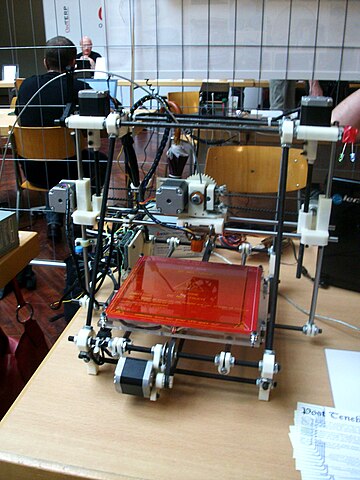3D printing for students – a first for UWE
Bristol’s University of the West of England announced yesterday that it is leading the way amongst UK universities by making 3D printing technology available to all students (and staff. Ed.) by locating a 3D printer in the main university library.
It is believed to be the first 3D printer in a UK academic library. The new initiative is made possible through a machine donation from 3D Systems Ltd.

3D print technology, also known as additive layer manufacturing, is a rapidly developing technology with applications in manufacturing, engineering and academic research. It is sometimes available to university students on relevant courses – such as creative product design or engineering courses. For example UWE Bristol already has 3D printers within the Faculty of Technology and in the leading Centre for Fine Print Research.
The machine, a triple head smoked 3DTouch, will be situated in the main library on the Frenchay Campus, where it will be available for all students and staff to use. During term time the UWE library has over 2,000 users per day.
This new initiative will enable students to engage with the latest 3D print technology and develop their understanding of how it can be used in different subject areas. Students will be able to ‘draw’ their design in a 3D CAD package. The file will then converted through a process that will make it readable by the 3DTouch printer using free downloadable Axon software. When it is printing the 3DTouch print head moves back and forward, building up layers of thermoplastic polymer, as it prints the 3D object layer-by-layer.
Andrew Bathchelor, UWE Senior lecturer in Product Design, says, “This initiative offers a valuable new resource for students. By linking with Bits from Bytes we are able to bring the concept of 3D printing to all students. Many of our Creative Product Design, Engineering and Fine Art Students, are already familiar with this technology, and use it within their academic work in their own departments. However, by offering this to the wider student body, we hope to stimulate usage of this technology and help students develop their understanding of how it can be applied. We hope students will come up with interesting applications, relevant to their subject. For example our students who are training to be teachers can familiarise themselves with technology that their pupils may have access to in the future. In addition Architecture and Planning students may choose to use the technology to ‘print’ out models for project work. We are sure UWE students will be inventive once they begin to see the possibilities of this technology. The 3DTouch will enhance the extensive range of resources we offer to students though UWE’s library service.”